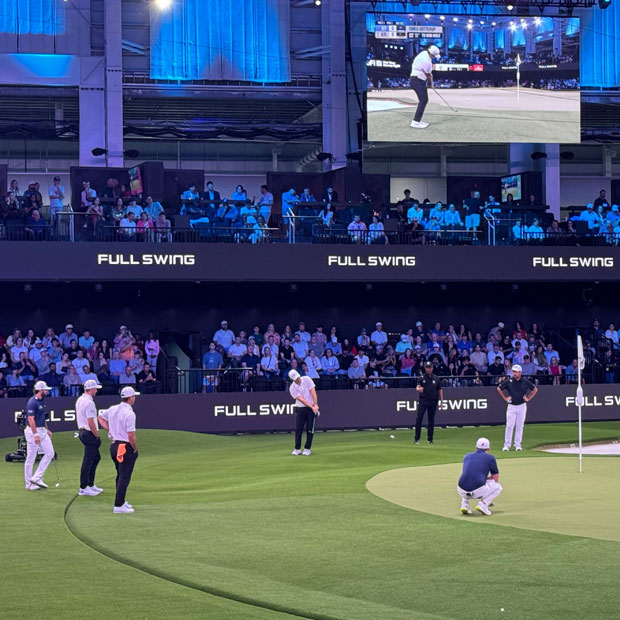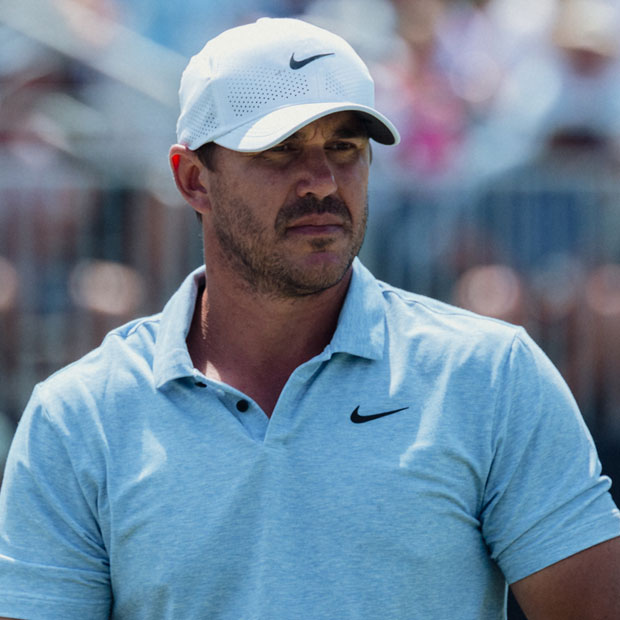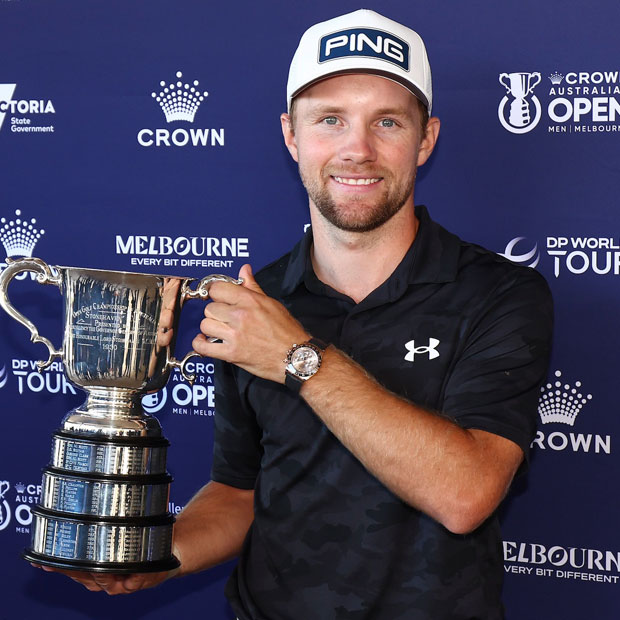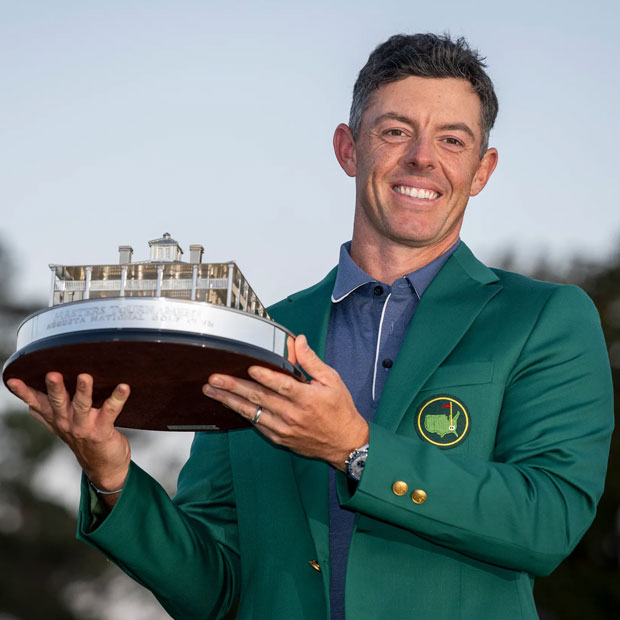The Open’s Charm Is Quite Simple
The Open Championship works so well in large part because it's all about the actual golf being played


We spend less and less time these days thinking about the “golf” portion of professional golf.
There are many ways in which the Open stands out as a singular in the professional game. It’s a completely different week of the year, especially in a landscape increasingly tilted toward a homogenous American style. The Open is on at different hours, with a different game, history, and look. We don’t need to rehash them all here, but one simple example: the bunkers look different.
Another way it stands out that has only crystallized further given the recent years in the pro game: it’s the week of the year when the professional golf tournament is most supremely about the golf. The skills to hit shots, the strategy and execution, how that interplays with the conditions and course, and everything mental from game-planning to the emotional intelligence needed to deal with the conditions and the course. So what you have are the absolute best players in the world today, and some of the best in its history, doing what they’re meant to do and talking about it in the most intense and interesting ways. Not discussing a merger. Not who should be in signature events or what a schedule should look like. Not boardroom drama. Not sponsorship or money matters. Not their current standing on a points list. Maybe not even the equipment debates, for this all too brief minute where a links course can present something more than a bashing test. (Though the pernicious effect of distance is still readily apparent.)
This is not to say the pros don’t also do what they do best at TPC Prefab Hills or at any other major. It’s just that with the Open, it’s the unquestionable priority, product, and show, for both those playing and watching. You are immediately reminded of it in quotes like this, from the best player in the world:
“I just feel like you have to be more creative here,” was world No. 1 Scottie Scheffler of his continued adaptation to the Open. “I feel like, when I do come over here, this is really how golf was intended to be played. I feel like there’s a lot more opportunity for shot making and being creative around the greens…so it really is fun to come over here and play, I feel like, just getting more creative.
“I think the biggest adjustment is how much the ball spins off the turf here. It spins a bit more than it does at home. When you’re playing shots into the wind, it will typically have much more of an effect on what the golf ball does than what we’re used to. Getting used to the heavier air and the spinnier turf.”
It’s a week to get into the nitty gritty – like turf, heavier wind, shotmaking – the actual substance of it. Scheffler went into the background of becoming, or trying to become, a creative golfer, in a quote that reads as damn near romantic to the golf sicko. That’s the kind of stuff that often comes out this week.
Great insight from Scheffler here on how he and coach Randy Smith approach creativity in his game and how he used ping pong balls to learn how to shape shots pic.twitter.com/hh2mOU02YB
— Fried Egg Golf (@fried_egg_golf) July 16, 2024
Rory McIlroy preceded Scheffler in the press room on Tuesday, talking about a different putting focus for this links test, that same “heavier” wind, and then developing a low-flighted tee shot in a later stage of his career.
“It’s definitely something I’ve developed over the years, and honestly it’s only a shot I’ve been able to hit since I’ve become a little stronger,” he said. “Really it’s about trying to keep my right side high on the way into the golf ball. I’ve talked about my sort of low tee and high tee. I tee it down low, which helps me keep on top of it and keep that right side high. If I tee it up a little higher, I can get some right side bend going.”
It’s that kind of golf nerd detail that the Open extracts, as it encourages players to get more contemplative about the full range of skills and expertise they possess. Following Scottie and Rory was Phil Mickelson and his brilliant (sometimes to a fault) golf brain describing the challenges of in-vs-out winds on different shot shapes.
Phil talking hook winds, slice winds, into and down. I can’t get enough.
Also at the end: “I’m not a betting man as you know [pause …] I guess that’s probably not true.” pic.twitter.com/y3gg2F9u4O
— Kyle Porter (@KylePorterCBS) July 17, 2024
And they all follow the greats of the game like Tiger, who for decades have used Open week as an opportunity to dig deep into subjects that do not have anything to do with any tour hierarchy, purse increase arms race, or business arrangements.
Here's Tiger Woods, arguably the greatest golf mind ever, on the way it should be.
Watched this segment several times and then just decided to write it down — from Chronicles of a Champion Golfer: pic.twitter.com/jiohWHhAws
— Brendan Porath (@BrendanPorath) July 7, 2018
The focus of the U.S. Open can feel too intent on the score atop the leaderboard, and whether there are enough crooked numbers populating the crosstabs in the scorecards to satiate our bloodlust. Sometimes the actual golf gets lost amidst that score-to-par obsession. The Masters can almost overwhelm the actual golf, with its Masters-ness and the unique Augusta National stage being the main character. It’s a brand so strong, a tradition so unlike any other, that the actual golf taking place on that stage is sometimes secondary to the stage itself. The PGA can sometimes look more like an elevated (super-designated??) PGA Tour event.
I won’t even naively argue that this is refreshing in the current money-soaked maneuvering. They talk about golf and play golf the other weeks of the year. There is, though, an increasing question on what that “golf” looks like those other weeks. The game often focuses on who can best optimize numbers on a launch monitor, then go and bash driver with impunity, and then strike a lift, cleaned, and placed ball with a wedge to a corkboard surface. It may be golf as it is now, or just some other display of elite skill. The Open is a true change of pace and a show of an original “product.” It seems so simplistic and obvious, but more than any other week the Open just gets the best players in the world discussing, debating, even romanticizing golf. It gets the audience thinking more about the actual play in front of them. And it leads to those who love it all to contemplate why they do.
For more coverage of the Open Championship, visit the Fried Egg Golf Open Championship hub here.
Leave a comment or start a discussion
Engage in our content with thousands of other Fried Egg Golf Club Members
Engage in our content with thousands of other Fried Egg Golf Members
Get full access to exclusive benefits from Fried Egg Golf
- Member-only content
- Community discussions forums
- Member-only experiences and early access to events











Leave a comment or start a discussion
Lorem ipsum dolor sit amet, consectetur adipiscing elit. Suspendisse varius enim in eros elementum tristique. Duis cursus, mi quis viverra ornare, eros dolor interdum nulla, ut commodo diam libero vitae erat. Aenean faucibus nibh et justo cursus id rutrum lorem imperdiet. Nunc ut sem vitae risus tristique posuere. uis cursus, mi quis viverra ornare, eros dolor interdum nulla, ut commodo diam libero vitae erat. Aenean faucibus nibh et justo cursus id rutrum lorem imperdiet. Nunc ut sem vitae risus tristique posuere.